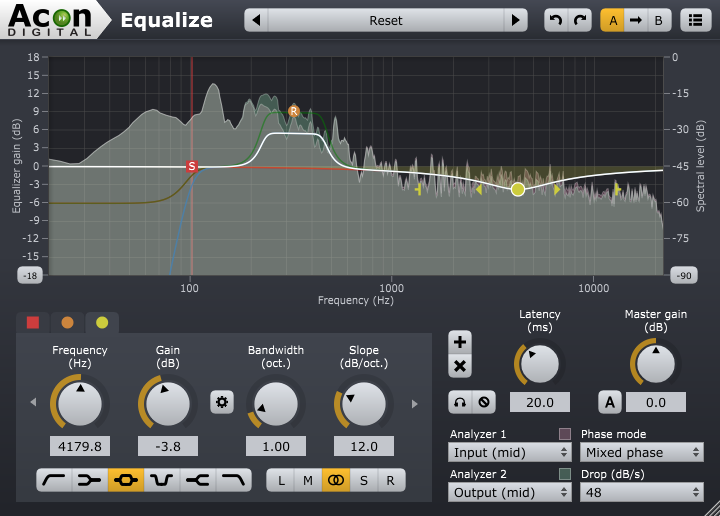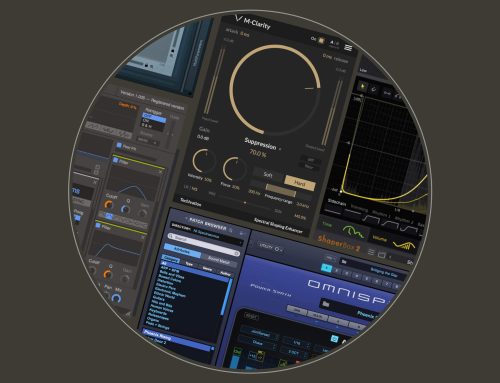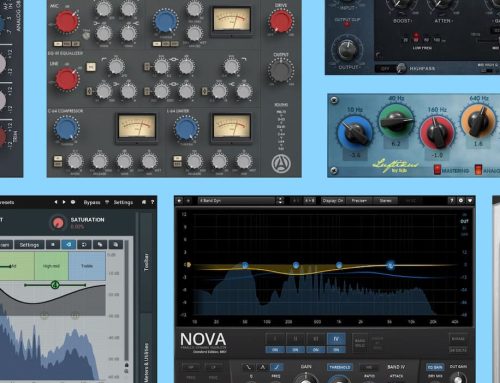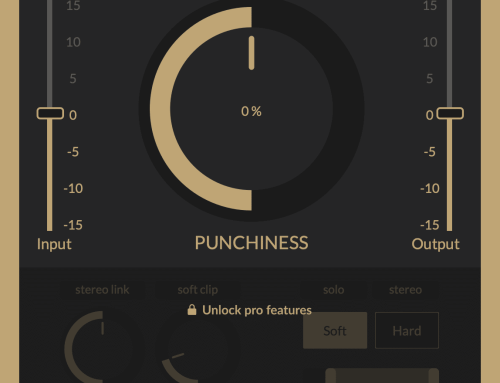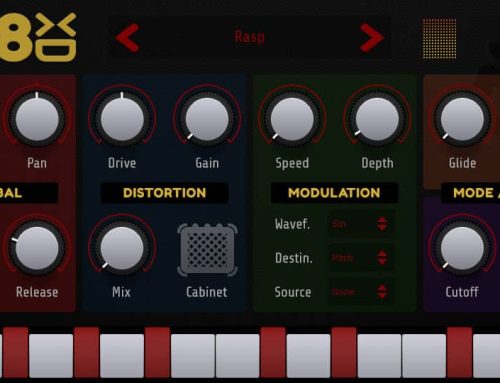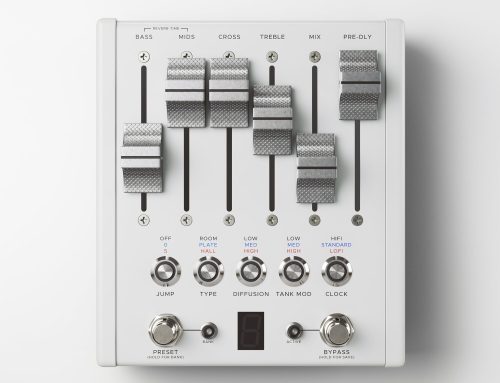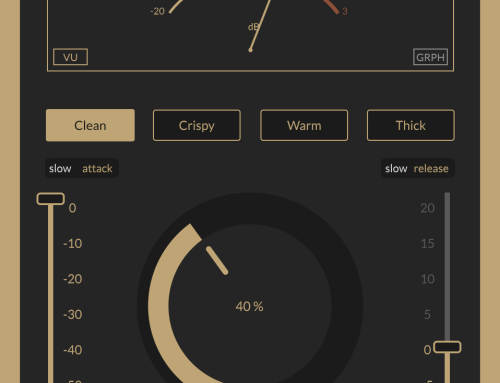Before I downloaded the Equalize plugin, I was a complete newbie to Acon Digital. They’re a Norwegian company based out of Oslo that specializes in audio software products. My first impression? These guys mean business. There’s a very polished and professional feel to this company. It’s different from what I’m used to in the industry which isn’t necessarily a bad thing. So let’s get down to it.
Equalize is, you guessed it – another Equalizer. I don’t think you can call yourself an engineer if you think the world has too many EQ’s. Despite popular belief, we could actually use more EQ’s in the market and especially this type. We’re not talking about a Pulteq. If you’re looking for a sound-based EQ, this isn’t it. We’re working with a parametric, graphics, surgical, sophisticated EQ here.
The user interface is clean, classic, simple and straightforward. You have all the necessary tools you’d need with some unique extras as well. You can solo or mute each band to hear exactly what you’re doing. You can visually see the analyzer input (gray) and output (green) of your signal, which is clutch when your ears don’t feel like helping you. This happened to me with the first thing I threw the plugin on. It was an audio percussion track out of an MPC that I didn’t even have an EQ on, to begin with. I just expected to boost the attack and maybe roll off the low end. I soon realized there was a ton of noise that I didn’t initially hear and was completely fogging up my mix. Yes, that had me re-thinking every track in my entire session. Touché, Acon.
Phase mode. This was interesting to work with. You have 3 options: Mixed, Minimum and Linear. The default is set to mixed phase, which sets your latency at about 20ms (but still adjustable to up to 120ms) and is more of an analog-sounding phase because it’s a blend of the other two. This is what sets Equalize apart. You can adjust per band and hear the difference in transients. This is extremely resourceful for a variety of instruments. I was doing all kinds of surgery to my bass tracks. If this isn’t a character-based EQ, this feature surely begs to differ.
The next significantly useful feature would probably be the Process Channel section. You can process a track’s left, mid, right, side and full channel individually. There’s a few presets for stereo processing to start with as well. Also on that note, there weren’t many presets to choose from. I think this kind of goes with the surgical aspect of this plugin because I didn’t find myself needing to use any of them. I think the analyzer has a way of making you want to just get in there and start adjusting things right away. If you have a common problem or basic need, these are good presets to start with.
Equalize is definitely a plugin you want in your toolbox. It’s simple, easy to use, immediate, visually pleasing and you can even have up to 12 bands. If you’re an editor, I’d highly suggest giving it a shot. Mixers will probably spend a little more time on a track than normal because of it. I threw it on anything I thought could use some help and in the end, definitely needed some help. There’s always at least one track in a session that has a low hum, buzz or rumble that you just want to get rid of quick so this would definitely be a go-to for those types of problems. The price was also significantly lower than some other similar plugins as well, which is always refreshing to see.
PJ Hatch – Mix Engineer and Music Producer
www.pjhatch.com


